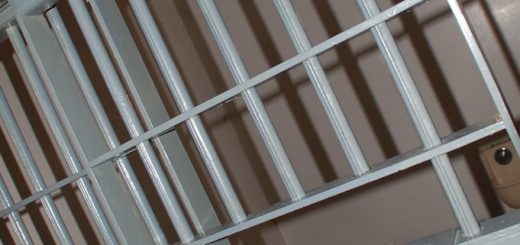Clarifying Corroborative Evidence and Hearsay: R v Charles

The Supreme Court of Canada (“SCC”) in R v Charles, 2024 SCC 29 [Charles] has clarified the approach to using corroborative evidence to establish the reliability of hearsay evidence. Moreau J, writing for the majority, allowed the appeal and ordered a new trial on the basis that an out-of-court statement by a witness at trial was improperly admitted. The statement did not have the indicia of reliability required to admit hearsay evidence, nor did the results of a search undertaken following the statement meet the criteria required for corroborative evidence as set out in R v Bradshaw, 2017 SCC 35 [Bradshaw]. In allowing the appeal, the SCC took the opportunity to restate the principles established in Bradshaw, namely, when corroborative evidence can be used to establish reliability of an out-of-court statement.
Facts
The appellant was charged with assault with a weapon, using an imitation firearm in the commission of an assault, and uttering threats. The charges arose out of an incident in 2016 at the school attended by the appellant, the complainant, and an individual named K.A. (Charles, para 7). At trial, the complainant testified that he had asked the appellant to stop bothering his girlfriend. Later that day, while the appellant, the complainant, K.A., and an individual named Fares were in the washroom, the appellant approached the complainant, and pressed a pistol to the complainant’s hip. The complainant asked if the pistol was real, to which the appellant responded: “Do you want to see if it’s a real one? I think I have a bullet left in it.” (Charles, para 8). K.A. and Fares later informed the complainant that the pistol was fake.
K.A. was arrested and taken into custody following the events. Accompanied by his mother, he was questioned by police investigators and eventually provided a written statement. In the statement, K.A. admitted that he was in possession of two pellet pistols that belonged to Fares. While in the washroom with the appellant and Fares, he was asked to give one of the pistols to the appellant. K.A. confirmed that the appellant pointed the pistol at the complainant while uttering threats, and that the appellant tried to wipe his fingerprints from the pistol before returning it to K.A (Charles, para 11). K.A.’s statement also described the pistols and where they were located in his house. K.A.’s statement was not recorded nor made under oath, he was not warned of the consequences of giving a false statement, and the police investigator could not confirm whether he had taken notes of all the questions asked (Charles, para 10).
Following K.A.’s statement, the police searched his residence. The pistols were in the location as described by K.A. in his statement (Charles, para 12). K.A. subsequently pleaded guilty to carrying a weapon for a purpose dangerous to the public peace. K.A. ‘s statement and evidence of the found pistols were tendered at the appellant’s trial to corroborate the complainant’s account and convict the appellant of the offences charged.
Judicial History
Court of Quebec
At trial, K.A. was called as a Crown witness. He claimed to have no recollection of the events in the washroom. The Crown requested a voir dire and advised the trial judge that it intended to adduce K.A.’s statement to police into evidence, alongside his guilty plea (Charles, para 13). The trial judge admitted K.A.’s statement into trial, but not his guilty plea (Charles, para 15).
The appellant testified at trial and stated that on the day of the events, K.A., a person unknown to him offered to show him an iPad. Some time later, in the school washroom, K.A. produced the iPad, but added that he had something else to show the appellant. He revealed a firearm, which the appellant held for a few seconds before returning it to K.A.. The complainant, who was also in the washroom, asked if the firearm was real. The appellant replied that it was not, but Fares — who was with them — stated that it still contained a bullet (Charles, para 16).
The trial judge applied the principled exception to hearsay, which is an exception to the general rule that out-of-court evidence adduced to prove the truth of its contents is presumptively inadmissible. The principled exclusion provides that hearsay evidence may be admitted where (1) it is established as necessary to the trial and (2) meets a threshold of reliability. The trial judge found that the necessity requirement was satisfied, given that K.A. recanted his statement at trial (Charles, para. 19). The trial judge also considered the statement to be reliable because K.A. knew his rights, was with his mother when making the statement, consulted counsel, admitted responsibility, gave an internally logical statement, and had no criminal record, among other factors (Charles, para 20). The pistols found at K.A.’s residence corroborated his statement, and given the circumstances and the strength of the corroborative evidence, the only likely explanation for the statement was its truth (Charles, para 22). The trial judge admitted K.A.’s statement, finding that it generally supported the complainant’s account, and that it had significant probative value in the context of the evidence as a whole. The appellant was convicted of the counts charged (Charles, para 25).
Quebec Court of Appeal
At the Court of Appeal, the issue was whether K.A.’s statement was properly admitted under the principled exception. The majority at the Court of Appeal dismissed the appeal. They held that because K.A. had consulted counsel, understood the gravity of the situation due to his cautioning, gave a coherent statement without coercion, and completely incriminated himself voluntarily, the statement was sufficiently reliable (Charles, para 36). Further, they held that the trial judge did not rely entirely on the corroborative evidence of the pistols to admit the evidence — it was open to the trial judge to consider the factors as a whole to find that reliability had been established (Charles, para 34). The majority also relied on the “striking similarity” between the complainant’s testimony and K.A. ‘s statement which they held tended to confirm the statement’s reliability (Charles, para 38).
Bachand J.A. (dissenting) would have allowed the appeal. He concluded that the search results were not relevant in determining whether the statement was admissible. Bachand J.A. cited the majority in Bradshaw, which held that the function of corroborative evidence is to reduce the need for cross-examination on the point the statement was tendered to prove (Charles, para 28). Here, there was no connection between the search results and the issue of whether the appellant had handled the weapon. While the search results could have been admissible to show that a pistol was in fact used, they had no bearing on whether the appellant had threatened the complainant (Charles, para 29). Bachand J.A. also took issue with the content of K.A. ‘s statement, recognizing that he had a motive to lie as he himself was charged in connection with the events in the washroom. The narrative in the statement, while incriminating in some respects, also offloaded some responsibility onto the appellant (Charles, para 30).
Supreme Court of Canada
Majority
Moreau J held that K.A.’s statement was erroneously admitted. In particular, she held that there was no connection between the fact that K.A.’s pistols were in the location described in his statement and the appellant’s degree of involvement in the incidents. The discovery of the pistols could not have confirmed whether it was the appellant or K.A. who handled the pistol in the washroom. (Charles, para 52). The majority held that evidence cannot serve to corroborate aspects of a statement with which it is not connected, even if the evidence confirms another material aspect of the statement in question (Charles, para 53).
The majority reiterated the strict test laid down in Bradshaw: one can only rely on corroborative evidence to bolster the reliability of a hearsay statement if it shows that the only likely explanation for the hearsay statement is the accuracy of the material aspects of the statement. Corroborative evidence thus has a narrow function – mitigating the need for cross examination on the specific point that the hearsay is tendered to prove (Bradshaw, para 45). There must be a connection between the corroborative evidence and the aspect of the statement sought to be proved. As such, it was an error to find that because the aspect of K.A.’s statement describing the location of the pistols was accurate, the other aspects of his statement describing the events in the washroom were also corroborated (Charles, para 62).
Apart from the corroborative evidence, the majority found that the trial judge erred in holding that K.A.’s statement met the threshold of reliability under the principled approach to hearsay. K.A. had a significant interest in minimizing his role in the events in the washroom — he himself was facing charges arising out of the events. His account explained why there were pistols in his house, but allowed him to avoid charges that involved a greater degree of participation (Charles, para 67). While K.A. incriminated himself, he portrayed his own conduct as being considerably less serious than that of the appellant (Charles, para 69). K.A.’s statement was also not recorded nor made under oath, meaning the defence could not cross-examine him to establish procedural reliability (Charles, para 74). Overall, K.A.’s statement, made as a charged accomplice, was suspect. With or without corroborative evidence, it should have been excluded.
Dissent
Côté, Rowe, and Kasirer JJ would have dismissed the appeal. Because the issue of whether a weapon was handled necessarily implies the existence of a weapon, the proof of the weapon’s existence was logically connected to both the weapon’s presence in the washroom on the day in issue and whether the appellant had been the one handling the weapon (Charles, para 90). It is therefore possible for corroborative evidence that does not relate to all material aspects of a statement to nevertheless support the threshold reliability of a statement. While it cannot establish threshold reliability alone, it can support a finding of reliability in combination with other indicia (Charles, para 91). The corroborative value of the search results should not be pared down to only one material aspect of the statement, as it was logically connected to both material aspects: whether the weapon was present, and whether it was handled by the appellant. Further, with respect to the indicia of reliability in K.A.’s statement, K.A.’s mother’s involvement implied that K.A. understood the gravity of the situation and his obligation to tell the truth, contrary to the majority’s suspicion on this issue (Charles, para 105).
Analysis
In my view, the majority decision is appropriately alive to the dangers of admitting hearsay evidence. By circumscribing the use of corroborative evidence in relation to an out-of-court statement, the majority mitigates the possibility that proof of the truthfulness of just one aspect of a lengthy statement addressing several issues would bolster the reliability of the entire statement. Hearsay evidence is presumptively inadmissible for a reason — it is difficult for triers of fact to assess the truth of a statement that cannot be tested through cross-examination. It is because of that absence of truth-testing that all aspects of a hearsay statement must be viewed with considerable scrutiny when they are sought to be admitted. The dissent’s approach allows one corroborated aspect of a statement to act as a trojan horse for the entire statement to pass the threshold reliability requirement, defeating the purpose of presumptive inadmissibility altogether. Ultimately, the majority took a realistic view of the connection between the corroborative evidence and the truthfulness of K.A. ‘s entire statement, and affirmed that all aspects of a hearsay statement should remain under the judicial microscope.







Join the conversation